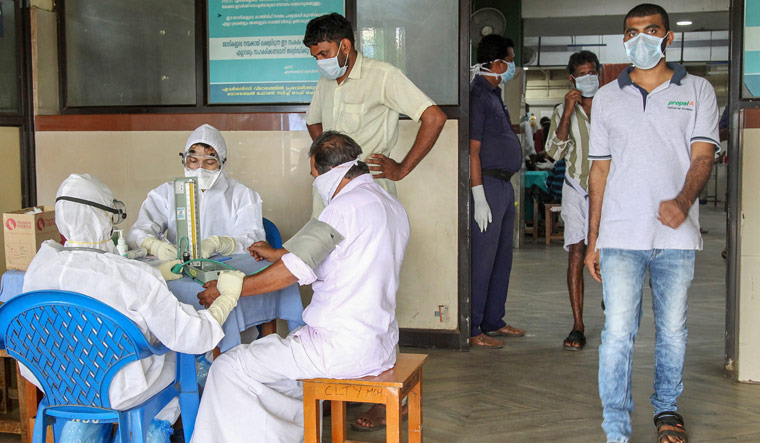After the recent Nipah virus outbreak, social media users have gone overboard spreading panic among citizens, said Dr N. Devadasan, director, Institute of Public Health, Bengaluru.
Devadasan led the WHO's Nipah virus outbreak investigation team when the deadly virus had caused 45 deaths in Siliguri in 2001. That time, too, the outbreak was localised, he said.
The public health expert who has been invited by the Kerala government to join the ongoing investigations on the Nipah virus said that in the 2001 outbreak, that took place in a remote area in Siliguri in West Bengal, the virus had already caused several deaths before its presence was confirmed.
This time, though, the situation has been different. “The Kerala health department took swift measures, and the virus was identified by the Central labs in a very short time, preventing it from spreading further," he said.
Worldwide, there have been 17-odd outbreaks of the deadly Nipah virus. In India, this is the third known outbreak. “The virus spreads in an area where humans and bats live together. However, such outbreaks cannot be predicted,” he said.
To answer the question of how the Nipah virus spread from West Bengal to Kerala, Devadasan said that extensive studies would need to be conducted by environmentalists familiar with the bats' flying trajectory to determine their route.
Devadasan said that the government would need to conduct intensive surveillance in the bat population to detect whether they were carrying the Nipah virus. "However, I don't think the government is ready at this point to undertake such a program because it would warrant covering a huge area," he said.
Drawing a parallel of sorts, with the death of a nurse in the current outbreak, Devadasan recalled that in the Siliguri outbreak, major deaths had been those of doctors and nurses who were in direct contact with the patients.
"Despite the threat to their lives, none of them left the post. They continued to perform their duties even in those conditions," he said. All patients suffering from the viral disease were also moved from private hospitals to public hospitals to ensure that treatment protocols were followed. "In Kerala too, the government should follow the same practice," he said.
Read more
Though the current outbreak is in Kerala, the presence of Nipah virus in fruit-eating bats has been detected in Haryana as well, according to a 2008 study published in the Emerging Infectious Diseases journal.
Oommen C. Kurian, fellow, public health, Observer Research Foundation, said that the study proves that bats carrying Nipah virus have possibly been around in many states other than West Bengal, where we had known outbreaks. "Given the weakness of our surveillance and data systems, and the fact that most of the treatment happens in the unregulated private sector, it is highly likely that we had a few cases here and there across India," said Kurian.
However, unless people died in large numbers, an outbreak in a corner of the country would largely remain invisible, he said.
"Kerala did an excellent job in terms of identifying the organism and limiting its spread. But we don't know yet about the true spread of this outbreak," he added. Given its recent origin, Indian health data/surveillance systems do not really cover Nipah as a disease category, said Kurian.

